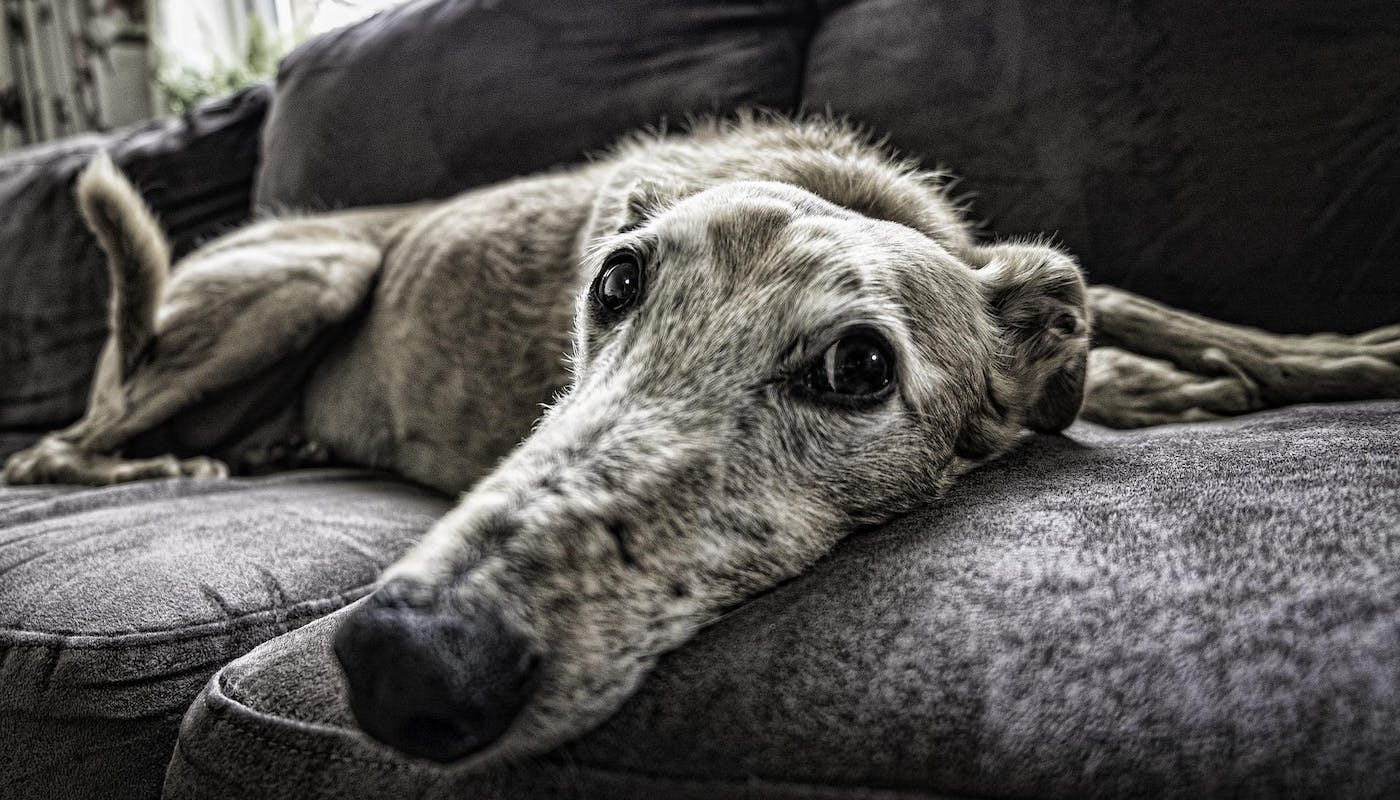How to Make Your Home Senior Dog Friendly
They’re going gray… they’re carrying a little extra-donut-weight… and they don’t always want to play chase. Our dogs may be aging but we love them more than ever. If you want to make your home more comfortable for your senior dog, we have some ideas.
What Problems Do Senior Dogs Develop?
After many years of leaping, racing, and chasing, our dogs suddenly begin to show signs of age – and we know from experience that it’s heart-breaking. When your once-athletic dog starts slowing down, breathing more heavily, or pausing before taking the stairs, it’s time to think about adapting their environment. The earlier you plan for it, the easier it will be.
What sort of difficulties will you be aiming to mitigate? The problems that senior dogs commonly develop include:
My Senior Dog is Slipping on the Floor…
Their legs can become weak due to an old injury or a condition like arthritis (see below).
At this age, your dog probably won’t accept new boots (although they’re worth a try).
Instead, help dogs with weak back legs to walk on slippery surfaces (like vinyl or lacquered flooring) by carpeting or adding mats in high-traffic areas. For example, lay a mat over the route that your senior dog usually takes to reach the back door. Right beside the door, a puppy pad can be useful (to capture last-second accidents). Also assess your furniture layout to see whether you could remove or relocate obstacles and give your dog a clearer route.
My Senior Dog is Struggling with Stairs…
When joints and spine begin to get stiff with age, stairs can be the first thing to go – but it doesn’t mean that your dog won’t be able to get around the rest of your home.
If your dog has always used stairs, he may be sad that they’re now off-limits. Many owners use ramps to adapt their home and yard so that their dog can still move around without struggling with stairs. If your dog usually travels in the car trunk, you can purchase a car ramp to improve their independence.
My Senior Dog Has Arthritis…
This is very common, especially among breeds such as Shepherds, Labradors/learn/dog-lifestyle/10-reasons-labradors-make-the-best-family-dogs and Retrievers/learn/dog-lifestyle/7-best-dog-breeds-for-active-families#:~:text=2.%20Golden%20Retrievers, and carrying additional weight makes the condition worse.
It’s caused by the deterioration of cartilage, which is supposed to cushion the joints. Without it, the joints become inflamed and painful. You can treat this inflammation with medication and supplements. Consider shortening your dog’s daily walk, and buying a specially-designed bed (see below).
My Senior Dog Has Dementia…
Dog dementia, or CDS, is also common among older dogs. Signs include:
- Defecating indoors
- Urinating on their bedding
- Sleeping more during the day
- Pacing
Your dog may appear to be confused and might not recognize people. At the first signs of cognitive impairment, we recommend introducing a supplement like The One/products/the-one. You should get advice from your vet about the best ways to support your dog. You can also try some of the following tips!
Adapting Your Home to be Senior-Dog-Friendly
Their legs and their eyes might be fading, but our love for them has grown stronger. When you want to give your senior dog the very best life in their twilight years, there are many ways to adapt your home. They’ll appreciate adaptations which will allow them to remain independent and mobile.
Should Senior Dogs Stay in a Crate?
Sometimes senior dogs don’t notice they need to wee – that’s when they start having accidents in the home. Unfortunately, it’s a brain-function issue (not a training problem). Crating your dog could make this worse, and being crated on damp bedding is unpleasant. Instead, create a safe and secure space for your dog (using a waterproof bed and puppy pads if necessary) and when you’re home, encourage them to get up regularly for stretches and pee-breaks.
Should You Buy a New Bed for Your Senior Dog?
Get your vet’s opinion on whether a new bed will benefit your senior dog. An orthopedic or memory foam bed provides extra support for tired joints. Raising their bed (and their food and water bowls) can help to alleviate strain on the spine and legs, too.
Does your Senior Dog Need a Ramp?
In the yard, house, or car, a ramp helps your dog to get around independently. It’s easier for them to climb than steps, and it’s more dignified than being lifted up by their human!
Does your Senior Dog Need Better Lighting?
If you suspect that your senior dog’s vision isn’t as sharp as it used to be, think about adding a motion-sensor night-light to help them get around in the evening. Senior dogs, especially if they have cognitive dysfunction, are likely to be awake more during the night.
Senior Dogs – Further Reading
Learn about improving your senior dog’s diet/learn/dog-health/how-to-keep-your-older-dog-healthy. Recognize the signs of dog dementia/learn/dog-health/understanding-how-to-make-your-dog-as-comfortable-as. Worried that your dog has arthritis? Learn how to care for a dog with arthritis here./learn/dog-health/caring-for-dogs-with-arthritis
